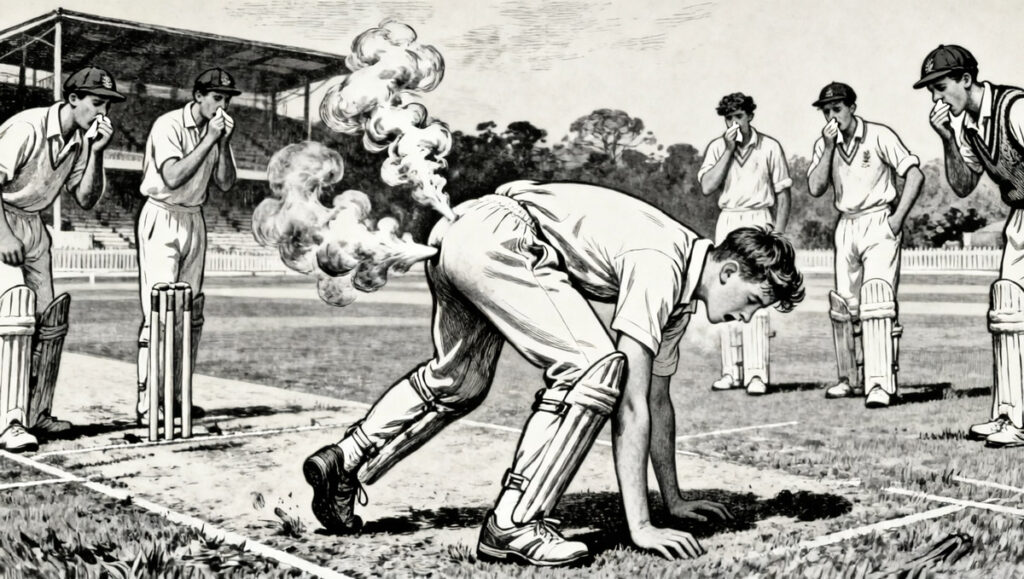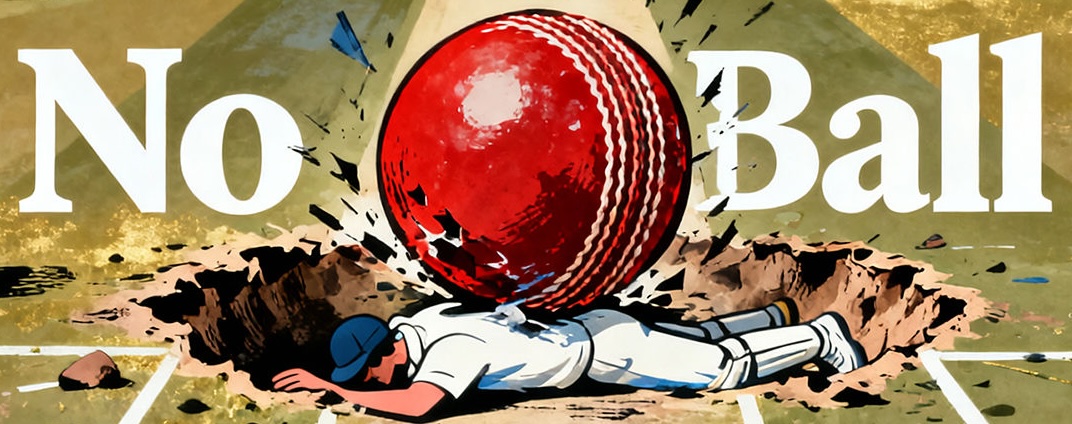
The off side in cricket refers to an area of the field — not to be confused with offside, that joyless rule from other ball sports, nor officide, the wilful murdering of business equipment after a printer jam in the third consecutive over of a Monday.
Technically, it’s the region in front of a right-handed batter, stretching from third man through cover to mid-off. A place of elegance, geometry, and repressed emotion — where the cover drive reigns and the fielder at point lives in permanent existential tension.
Historically, the off side was a moving target — partly due to tactical innovation, but mostly because it was home to the more flatulent members of the fielding unit. The prevailing breeze often dictated where the “off” truly was. As the modern player’s diet began its long, processed decline — punctuated occasionally by vegan awakenings — the ICC faced a linguistic crisis. Entire matches descended into semantic chaos as commentators struggled to identify which half of the field wasn’t technically off. A quiet committee meeting in Dubai resolved it: the off side would remain a concept, not a smell.
In tone, it is cricket’s tidier hemisphere — the one that still believes in wristwork, balance, and the illusion of control. Bowlers flirt with it, captains worship it, and batters use it to prove that artistry can still survive the algorithm.
But beneath the geometry and grammar lies a deeper truth: the off side is cricket’s mirror. It reflects our better selves — poised, intentional, faintly judgmental — while reminding us that, under pressure and poor catering, every side is capable of going off.


